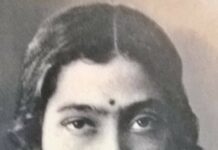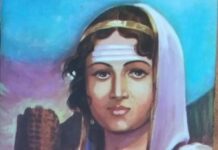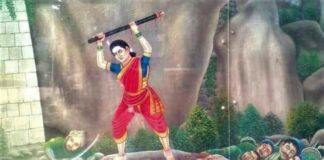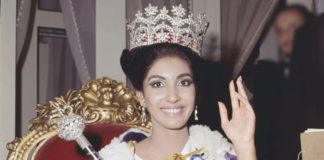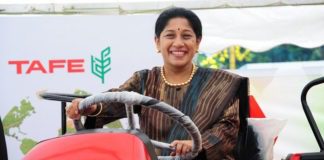It was 1925 when the Indian National Congress adopted the goal of ‘complete independence’, giving momentum to the Indian freedom struggle. A young girl, Anna Mani, in Thiruvananthapuram, was deeply influenced by the idea of freedom and the nationalist ideology. However, her idea of attaining independence was unique and had its constructive reasoning. In the times when women had restricted rights and freedom, she insisted upon gaining individual freedom and embracing her right to education and self-improvement. Her idea of freedom, over the years, extrapolated to making India self-reliant by building native equipment rather than importing them from foreign markets. That unstoppable little girl grew up to become one of India’s most remarkable weather scientists.
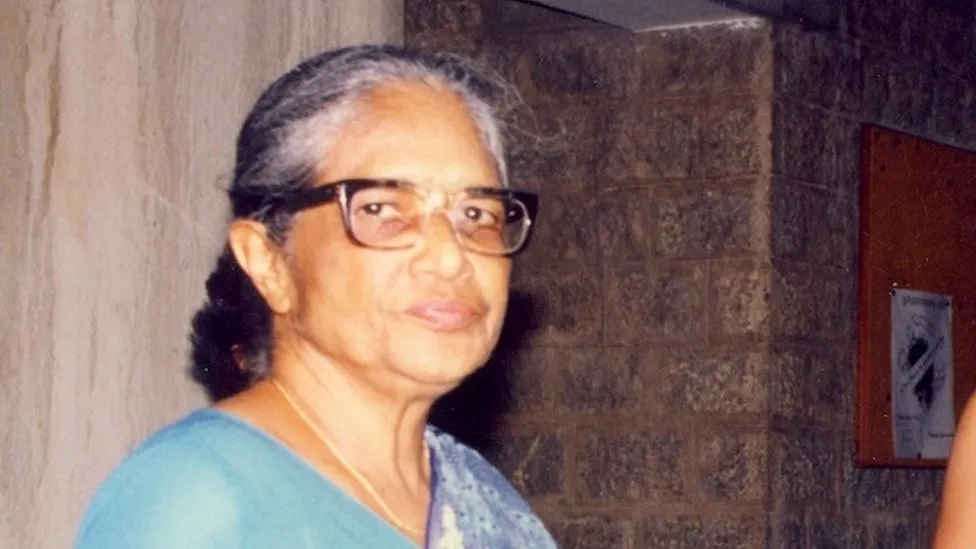
We all remember names like C.V Raman, Vikram Sarabhai, Homi J Bhabha, Abdul Kalam etc. when we think of Physics and related fields. The lesser-known name but the most important name that we all should be proud of is Anna Modayil Mani, the Weather Woman of India.
Early Life Details of Anna Mani
Birth:
Anna Mani was born seventh in a Syrian Christian family of eight children in 1918 at Peermade, then Travancore, now Kerala, India.
Family:
Her family belonged to the ancient Syrian Christian church but her father remained an atheist all through his life. He was a civil engineer and the family also owned large cardamom estates. The views of her father were similar to a typical Indian upper-middle-class person. Priority was given to the son’s education while the daughters were encouraged to learn and master household work gaining the ability to manage their husband’s family and future children. All of Anna’s sisters were married off early in their teens.
Early Education:
Anna insisted upon higher education. Her love for books and gaining knowledge started from a very young age. Her days passed in reading books, one after the other, with no clue of the sun and the moon and the noon and the twilight. By the time she was 8 years old, there was hardly any book left in her local library that she did not read. Reading books opened doors to a wider society and a broader world. Reading instilled the ideas of self-reliance, individual freedom, social justice etc. in her young mind.
No Diamonds, only books for Anna Mani:
On her 8th birthday, Anna Mani was gifted diamond earrings. But like other girls, she was not excited about those shining stones. She demanded an Encyclopaedia Britannica instead. Her parents always noticed how different her thoughts were. When she expressed her desire to pursue higher education, there was neither encouragement nor resistance from her father. Though she wanted to study medicine, for some reason, she couldn’t take it up. Thus she decided to take up Physics as she knew she was good at it.
Higher Education:
In the year 1939, Anna Mani graduated with a Bachelor of Science degree with honours in Physics and Chemistry from the Pachaiyappas College in then Madras, now Chennai. The next year, she was awarded a scholarship to do research in Physics as a graduate student at the C.V Raman’s laboratory in the Indian Institute of Science, Bangalore.
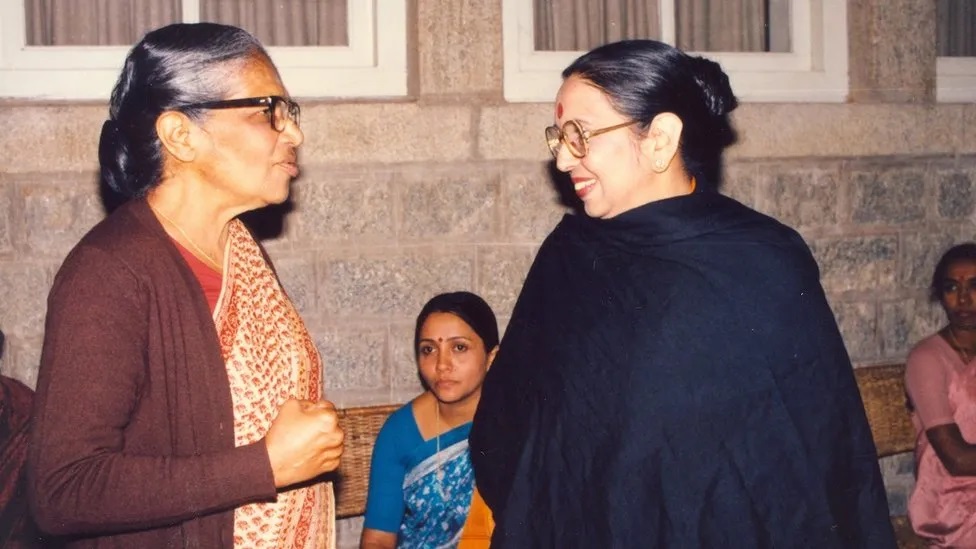
Anna Mani and the C.V. Raman Lab
When C.V. Raman had conflicts of opinion with Max Born on crystal dynamics and with Kathleen Lonsdale on the structure of diamond. Thus, Raman’s laboratory tirelessly worked on studying diamonds. He collected around three hundred diamonds from India and Africa, assigning some aspect of diamonds to every student to study. Anna Mani was given thirty diamonds and her work was to record and analyse their fluorescence, absorption, temperature dependence, and polarization effects. Anna Mani spent her days and nights alike in the laboratory to accomplish this task.
Anna Mani – The Woman with a Mind of Steel
Anna submitted her PhD. Dissertation to the University of Madras, a culmination of her observations and results of her research from C.V. Raman’s laboratory. Shockingly, the university refused to award her a Ph.D. degree on the lines that she did not have a Master’s degree. Anna Mani was disheartened initially, but she gathered her pieces and stood up. During the same time, in 1945, the Indian government announced scholarships in various fields for those who wished to pursue their internships abroad. Anna came across a call for candidates interested in meteorological instrumentation. She applied for the same and was granted the scholarship. With this, Anna sailed to England to explore the field of weather instrumentation and forecasting tools.
Introduction of Anna Mani to the Indian Meteorology Department
She returned to India after successfully finishing her three-year coursework in England and joined the Indian Meteorological Department, Pune in 1948. Under Anna’s mentorship, the work of designing weather instruments at the department bloomed. By the next decade, the department already manufactured around 100 weather-measuring instruments. Anna was also in charge of organising the importation of British meteorological equipment. By 1953, Anna Mani began leading a division of 121 men.
Anna and her Idea of Self-Reliance
While India was trying to free herself from the shackles of the British, the ideas of independence, nationalism, freedom etc. had become a part of every Indian’s thought process. On the other hand, Anna’s approach to independence was not just confined to gaining freedom but traversed beyond the idea of becoming self-reliant. Anna Mani wished for a country that would design its equipment instead of importing them from foreign lands. After finishing her graduate physics courses in 1945 from Imperial College, London with a specialization in meteorological instruments, Anna decided to make India capable enough to develop its weather forecasting instruments. Thus after returning to India in 1948, she joined the weather department and started using her knowledge in creating weather instruments which were, until then, being imported from Britain and other European countries.
Anna Mani and her Journey Towards Developing Indigenous Instruments
Anna Mani worked tirelessly to develop tools that measure a variety of weather phenomena including humidity, rainfall, air pressure and wind speed. It wasn’t an easy task, especially as it was the time when the processes of manufacturing, exports, and imports in India were controlled by the British. India was forced to import the finished goods instead of creating its own business. In such times, Anna Mani, who felt that dependency would never shower freedom, developed technologies and tools for India to break free from the economic and social chains forced upon her.
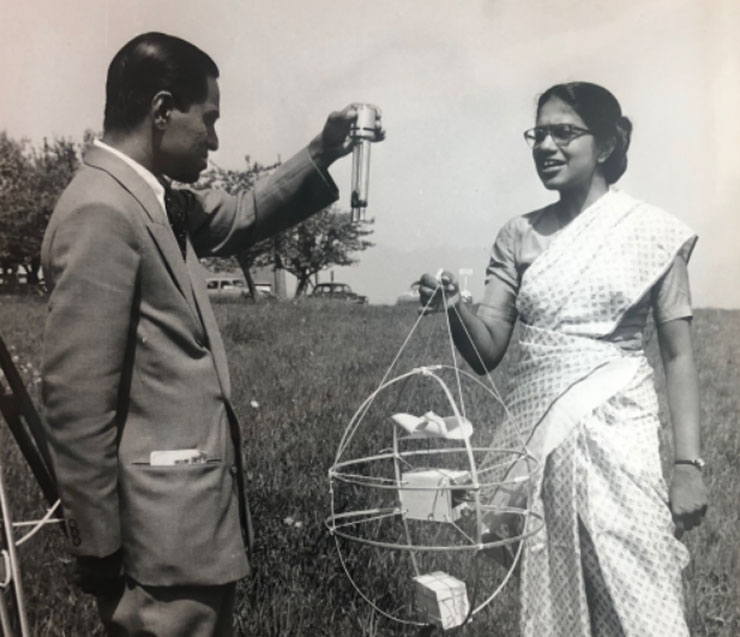
Anna Mani and her Forte around Solar Energy and Ozone Layer in Environment
It was 1964. Anna Mani wanted to develop technology to harness solar energy. Unfortunately, there were no documented records on the availability and distribution of sunlight across various parts of the subcontinent. No measurements were taken in the past stating the distribution, intensity, duration and amount of sunlight in various parts of the nation. Thus, Anna Mani started by taking the measurements herself.
During the process, she happened to study the ozone layer and thereby she developed an instrument that can measure the thickness and concentration of ozone across different regions. She named the instrument as Ozonesonde. Ozonesonde is an instrument that generates an electric signal when the iodide present in it reacts with atmospheric ozone. The greater the signal generated, the higher the concentration of ozone. Anna Mani thus created the first Indian-made instrument to measure the presence of ozone at a distance of up to 35km above the ground.
Ozonsode has been used ever since then? Well, its uses are innumerable, even to date. By the 1980s, Ozonesonde started to be used on Indian expeditions to Antarctica. When in 1985, the Nobel prize-winning physicist Joseph Farman signalled the world about the ‘hole’ in the ozone layer, Indians could verify his discovery based on the data that was collected using Ozonsonde. Anna Mani also set up radiation stations across the country, thereby paving the way to exploring renewable energy sources in India. Isn’t this enough to substantiate how visionary this woman was, well in those times? In the 1980s, Anna Mani started a company that developed instruments to measure solar radiation and wind speed and worked on projects for harnessing wind energy. For her contributions to ozone-level measurements between 1960 to 1990, Mani also received a citation from the International Ozone Commission.
Anna Mani and her Manufacturing Unit of Various Instruments
She laid the foundations for a workshop and shouldered the herculean task of manufacturing more than a hundred different instruments to measure rainfall, temperature, and air pressure among several others. As reported by The Times of India, Anna Mani was appointed as the head of the division at the Meteorological Department, a male-dominated space with a team of over 100 men. Under her able leadership, the department produced over 100 standardised instruments and other indigenous equipment for weather forecasting.
The instruments she developed are known for their precision and accuracy. There was no compromising on their quality and reliability. She once said “I believe that wrong measurements are worse than no measurements at all” in an interview to the World Meteorological Department in 1991. She made sure that every instrument had even the minute details of its engineering specifications, drawings and manuals specified. To verify the accuracy of the India-made instruments, she worked with members of the World Meteorological Organisation to rigorously compare the measurements with those of others in the global arena.
“These high-precision instruments, were till then, the monopoly of the western countries and most of the design parameters were kept secret. So one had to start from fundamentals and develop the entire technology oneself”.
Noted meteorologist CR Sreedharan
Inventions of Anna Mani in the Field of Green Technology
She laid concrete foundations for India in the field of tapping renewable energy sources and adopting green technologies. Anna Mani set up close to 150 sites and installed stations across India to study wind energy. Her studies and observations helped scientists establish numerous wind farms across the country. Here, the point that Anna did all this at a time when India was just trying to stand on her feet after gaining freedom and that India’s thought about green energy and technology is far beyond its contemporary circumstances, is remarkable.
Anna Mani and Her Battle with Gender Stereotypes
Anna Mani has always advocated rightful freedom – freedom that liberates an individual or institution from being a minion, freedom that allows every institution and individual to stand sovereign, and freedom that promotes rational thinking and intellectual growth. Her progressive thinking which emphasized innovation and development, came in an age that saw women as mere caretakers of children, elders and households. Anna’s fight with gender roles began right in her teenage years when she disapproved of the idea of getting married like other teenage girls of her age. She preferred books over jewellery, and rational thinking over merely following others’ footsteps.
Abha Sur, a scientist turned science historian, noted how in those days, the upper middle class began educating their daughters to make them good wives and mothers. Anna herself faced discrimination in her journey in several instances and shockingly this discrimination also came from her mentor and the famous physicist CV Raman. CV Raman was reluctant to admit female students to his lab and if he had to, he imposed several restrictions on them. He disapproved of men and women walking together or talking to each other.
According to Abha Sur’s Dispersed Radiance: Caste, Gender, and Modern Science in India, CV Raman’s laboratory had female students working in an isolated environment being denied opportunities to take part in discussions and debates on scientific aspects. Mani and her female co-researchers faced undeniable discrimination from their male peers. Sur, in her book, states how the males would perceive a minute error made by women in handling instruments or setting up an experiment as “female incompetence”. Abha Sur further noted in her chronicle how Mani’s audited course on theoretical physics was assumed to be trivial and beyond her ken.
In another instance, during the early 1960s, when Mani got a chance to be a part of the International Indian Ocean Expedition, she was not allowed on the ships to collect data because in those days women were not allowed on ships of the Indian navy. Despite many instances of discrimination, Anna Mani never let herself succumb to patriarchal ideologies. She never liked to play the victim, but continued to make her way through the high tides. She never commented, complained, or lamented about missed opportunities or denied rights. Anna Mani was seen to hold an ideology that men and women have different and unique sets of intellectual capabilities and no one is either inferior or superior in terms of gaining knowledge. Anna Mani firmly believed that her gender had nothing to do with her professional aspirations and Science considers no gender.
Anna Mani – the woman who Gifted a Weather Library to the Nation
As per the mentions on the website of the Ministry of Science and Technology, Anna Mani has submitted five research papers and a PhD dissertation while she worked on the spectroscopy of diamonds and rubies in C.V. Raman’s laboratory. She set up a meteorological observatory and an instrumentation tower at the Thumba rocket launching facility. She published several papers on subjects ranging from atmospheric ozone to the need for international instrument comparisons and national standardisation.
After she began working with the meteorology department in Pune in 1948, she published an array of studies on meteorological instrumentation. She wrote The Handbook for Solar Radiation Data for India in 1980, Solar Radiation over India in 1981 and Wind Energy Resource Survey in India in 1992. These books serve as handbooks for weather scientists and physicists. Referring to these books give a detailed account of almost everything one needs to know about weather, wind, green energy, and solar power among a plethora of other significant aspects. They are also considered as standard reference books for scientists.
After her retirement as the Deputy Director General of the meteorological department in 1976, she returned to the Raman Research Institute and worked there as a visiting professor for three years. Anna Mani also set up a millimetre-wave telescope at Nandi Hills, Bengaluru. Anna also published several papers on sustainable energy measurement. This way, she stood as one of the earliest exponents of sustainable energy in India.
The Association of Anna Mani with several Meteorological Institutions
Anna was a member of several scientific associations including the World Meteorological Organization (WMO), the Indian National Science Academy, the American Meteorological Society, the International Solar Energy Society and the International Association for Meteorology and Atmospheric Physics. She was awarded the INSA K. R. Ramanathan Medal in 1987.
Anna Mani Death
Anna, who dedicated her life to science, innovation and development remained unmarried all her life. In 1994, Anna suffered a massive stroke after which, she turned immobilized for the rest of her life. Finally, on 16th August, 2001 she breathed her last. The contributions she made to the field of weather forecasting will continue to help us for ages.
Anna Mani – Beyond Books and Research
Anna Mani was not just a scientist who danced around with books, instruments, and materials. Her interests and likes were beyond science. She loved listening to music and always had a great desire to dance. She was an ardent lover of nature. She had pets and loved grooming and spending time with them. She loved travelling and often went to places like Nainital and the Andamans for relaxation.
She stands as a beacon of excellence in the realm of weather science. She is remembered not just for her meticulous research but also for the way she mentored aspiring scientists. Her advocacy for sustainable practices undoubtedly laid the foundations for the future of weather science. Thank you, the Weather Woman of India and sorry for not voicing your story as much as it deserved. We are indeed indebted to you for showing us the true meaning of freedom, empowerment and free thinking.

